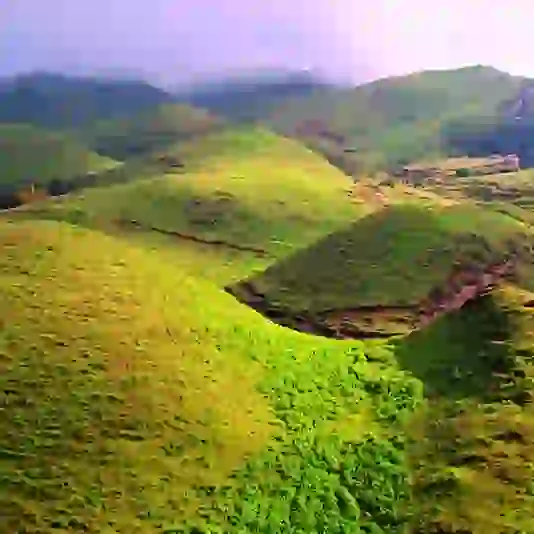Kapilvastu district, sometimes known as Kapilbastu, is a district in Nepal's Lumbini Province. The district, which has its headquarters at Kapilbastu municipality, has 1,738 square kilometres (671 square miles) and had a population of 481,976 in 2001, which climbed to 571,936 in 2011.
The town of Kapilvastu is around 25 kilometres southwest of Lumbini. At an elevation of 107 meters, the municipality is located on India's southern border with Uttar Pradesh. Kapilvastu is historically significant since it is where Gautam Buddha spent his infancy.
Irtroduction to Kapilvastu District
The Kapilvastu district has a large number of washed-away stupas and monasteries. For Buddhist devotees, the location is regarded as a sacred site. Kapilvastu district was formerly the historic capital of the Shakya clan, whose monarch “Shuddhodhan” was known as the father of Buddha.
He fled the palace of Kapilvastu at the age of 29 in search of enlightenment. After receiving enlightenment, he returned to the court after 12 years. Kapilvastu is an important archaeological site, and as a result, it is one of Nepal's most popular tourist destinations.
Places to Visit in Kapilvastu District
The most incredible tourist sites in Kapilvastu District have been listed below for you to see.
- Tilaurakot
- Gotihawa
- Tilaurakot Museum
- Araurakot
- Nigrodharam
- Niglalihawa
- Buddhist Circuit Tour
- Jagadishpur Lake
Tilaurakot
Tilaurakot is the most popular tourist spot in Kapilvastu. Siddhartha spent the first 29 years of his life here. Siddhartha married Yashodhara and gave birth to a son called Rahula in this place.
He left the palace at the age of 29 for enlightenment after becoming dissatisfied with his existence and other perplexing questions. In 1996, the Tilaurakot Palace was designated as a Tentative UNESCO World Heritage Site.
PC Mukherji found Tilaurakot in 1899 while following the footsteps of two Chinese monks. It was the civic centre from the 9th to the 3rd century B.C., according to archaeologists.
Gotihawa
Gotihawa is a VDC that is located 4 kilometres southeast of Kapilvastu. It is now known as Gotihawa, although it was previously known as Khemavati. Gotihawa, according to Theravada Buddhism, is the birthplace of the Krakuchanda Buddha.
The pillar of Ashoka, who visited the site in the third century BC on a pilgrimage, may also be seen. Relics dating back to 900 BC were uncovered during the 1994 excavation. The infrastructure of this site, according to archaeologists, was built in the sixth century. Ancient artefacts like bricks, ceramics, and sculptures were also preserved in Gotihawa.
Tilaurakot Museum
This historical museum houses jewellery, decorations, and coins dating from the 7th century BC. This museum also houses some of the artefacts discovered during the excavation of Tilaurakot Palace.
Araurakot
Araurakot, 1.4 km east of Niglihawa and 10 km northeast of Taulihawa, is the birthplace of Kanakamuni Buddha.
Kanakamuni Buddha spent his childhood, adolescence, and marriage at Araurakot. The old ruins of a moat and brick defences may be seen here.
Nigrodharam
Nigrodharam, also known as Kudan, is another famous Buddhist site. The town of Nigrodharam lies 2.5 kilometres south of Taulihawa. This is where King Suddhodhan Shakya built a large vihara for the first time after achieving enlightenment to meet his son.
This is also where Buddha addresses his supporters, including his wife and son, in his talk. Excavation is also underway, and artefacts dating back to the eighth century BC have been discovered.
Niglalihawa
Niglalihawa was also known as Sobhavati in ancient times. Konagamana Buddha was born in Niglalihawa, according to Theravada Buddhists. The biography of Konagamana Buddha is described in Buddhavamsa chapter 23. About 7 kilometres northeast of Taulihawa lies Niglalihawa. In 249 B.C., Ashoka came to this location and constructed a pillar with an inscription that may still be seen today.
Buddhist Circuit Tour
The Buddhist Circuit is a pilgrimage route that follows Buddha's footsteps and visits critical historical sites. This journey allows us to learn about his life from birthplace to where he meditates and obtained enlightenment. There are around 62 archaeological sites scattered around the area. Tilaurakot, Kudan, Gothihawa, Niglihawa, Sagarhawa, Aurorakot, Devadaha, and Ramagrama stop on the Buddhist Circuit Tour.
Puskarni Pond
Queen Mayadevi is said to have bathed before the birth of Siddhartha Gautam. Siddhartha Gautam had his first bath at this pond as well.
Tilaurakot
Archaeologists believe this was formerly the capital of Kapilvastu, and it was here that Siddhartha Gautam spent 29 years. Tilaurakot is located 27 kilometres west of Lumbini.
Bodhgaya
Bodhgaya is a town in the Indian state of Bihar where Siddhartha Gautam attained enlightenment under the bodhi tree. He attained enlightenment and became Lord Buddha as a result of his prolonged meditation. The Bodhi Tree, Animeshlochana Chaitya, Ratnachankramana, Ajapala Nigrodha Tree, Rajyatna Tree, and Muchhalinda Pond are some of the most important pilgrimage sites.
Kudan
Kudan is around 4.5 kilometres south of Tilaurakot. This is the site of the first meeting between Buddha and King Suddhodhan after Buddha's enlightenment. The Kasaya (the yellow garment used by monks) was delivered to Lord Buddha at Kudan.
Sarnath
After attaining enlightenment, he began giving discourses to his disciples at Sarnath. This location is 13 kilometres northeast of Varanasi. This is where Jesus gathered his first disciples to spread his new teaching. Asoka built the Dhaka Stupa at Sarnath, which has an excellent lion capital pillar.
Kushinagar
In Kushinagar, Lord Buddha became unwell and passed away in 543 BC. King Ashoka kept his remains in eight memorial chortens and dispersed them to 84,000 stupas. Kushinagar is a town in India near Gorakhpur, in the state of Uttar Pradesh.
Jagadishpur Lake
In addition to archaeological monuments, Jagadishpur's Kapilvastu Municipality has a lake. 11 kilometres north of Tailihawa lies this lake. The Jagadishpur Lake covers 157 hectares and is home to a variety of bird species. Migrating birds from nations such as China, Mongolia, Turkmenistan, Russia, Siberia, and Kyrgyzstan flock to this lake.
Around 22,000 birds find refuge in this lake. In the winter, the birds begin to migrate here and stay until February. Gadwall, Ferruginous Deck, Northern Shoveler, Northern Pintail, Eurasian Wigeon, Frequent Pochard, and Cotton Pygmy Goose are among the more common birds.
















